I wasn’t sure what I was going to write about for this post. I started a content writing job that has zapped my ability to think, and I’ve done some Outfest coverage for Autostraddle, so I was at a loss. And then, the social media gods delivered, as they do.
A Facebook friend of mine posted her hot take about the Barbie movie being a way for Mattel to sell plastic dolls under the guise of feminism, and implied that Barbie isn’t feminist. Her critique is less about the movie and more about the doll, so that’s what I’m focusing on here. I haven’t seen the movie yet, but I did watch the Hulu documentary Tiny Shoulders, which focuses on the inclusive redesign Barbie went through in the mid 20teens.
Okay so back to what I saw on Facebook. This friend admitted that as a kid she was a fan of She-Ra and Princess Leia because they were feminist and Barbie wasn’t.
Here’s the thing: I don’t think you have to be a fan of Barbie. If she wasn’t your thing, that’s totally fine! To each their own. But her take rubbed me the wrong way. Mainly because those two female characters in particular are held up as the gold standard of feminism, and while they are absolutely female icons, they are not more inherently feminist than our girl Barbara Millicent Roberts.
Let’s talk about She-Ra. She was created as He-Man’s sister, in a way to market the Masters of the Universe world to girls. In the 1980s, Ronald Reagan deregulated how companies can market to kids. That’s why there was a boom in products made and marketed to kids. Since He-Man was a big hit with boys, they wanted to milk it for everything they could, and She-Ra was born. She-Ra was an action princess, but she LITERALLY looks like a supermodel who wears boots instead of high heels. I’m not saying she wasn’t feminist, but girlie was 100 percent created by and for the male gaze. And guess who made the She-Ra dolls? That’s right, Mattel, the same company that makes Barbie. Big freaking surprise on that one. But if you were playing with a She-Ra doll in the 80s, you were playing with a Barbie who was wearing a She-Ra outfit, make no mistake about it.
Princess Leia is another example that women will tout out as the pinnacle of feminism. And again, I’m not saying she’s not feminist. I am admittedly not a Star Wars person, so I could honestly care less, but it’s really frustrating that because she wears robes and gets to fight alongside two men, she gets to be more feminist than Barbie. She gets sexualized too, because she was also created by and for the male gaze. And that’s fine! But let’s stop pretending that because these characters lead and fight they are the definition of what it means to be a feminist. Because to me, that feels incredibly narrow minded.
From her inception, Barbie was created to be a feminist. She was created by Ruth Handler in the mid 1950s. Ruth got the idea for the doll when she noticed her daughter Barbara playing with her little friends. They would play with paper dolls and project all sorts of their dreams and ideas about the future onto them. Those girls wanted to fantasize about what their future could look like at a time when they weren’t allowed to even have a future to dream about. Back then, the only dolls girls had to play with back then were soft bodied baby dolls — even their play was teaching them how to become wives and mothers. But Ruth knew that these young girls wanted a more tangible toy than just paper dolls to play with.
Barbie was unveiled at the Toy Fair on March 9, 1959, which is also her official birthday. Four days before Barbie’s premiere, my mom was born. It’s like her and Barbie grew up together. So that means that Barbie has been teaching young kids that you can theoretically be anything you want to be for the last 64 freaking years. Originally packaged as a “teen fashion model,” Barbie was the coolest girl on the block. That’s why she has breasts; it was really important for Ruth because she wanted Barbie to be inspirational. Within the first few years of her release, she had multiple jobs, including an astronaut, 20 years before Sally Ride would go.
She was supposed to be inspirational and aspirational, but really, she was supposed to give girls something to project their dreams for the future on. And that’s really cool, because girls didn’t have that back then. Women could only be moms, secretaries, and teachers. They didn’t go to college to get degrees and get jobs, they went to study art and find husbands. Young girls watched their mother make weird Jell-O salads and play bridge and have an allowance. Barbie didn’t do any of that. She had her fabulous life with all of her fashionable clothes and cool shit and didn’t have to answer to anyone.
Ken, even though he was introduced and sold as Barbie’s boyfriend since 1961, was really just another accessory. Just like her Corvette, the Dream House, the Camper, etc. Ken and Barbie were boyfriend and girlfriend for 43 years before they broke up in 2004. When they got back together, they were just “friends” and have remained that way since. When Mattel decided that one of Barbie’s crew needed to get married, they could have married Barbie and Ken, but they didn’t. Because Barbie was living her best single girl life. No, they married Barbie’s friend Midge to Ken’s friend Allan. When Midge got pregnant (remember that freaky doll?) Barbie was the obstetrician.
I really think that the second wave feminism that dominated the late 60s/early 70s is to blame for a lot of the early backlash against Barbie. If you know me, you know that I have a lot of issues with second wave feminism for a multitude of reasons, one of which is a lack of intersectionality. In the minds of women like Gloria Steinem and Betty Friedan, Barbie and her femme presentation was the antithesis of what they wanted to be, and therefore she was bad. And if you loved her, then you were bad too. There is no nuance in femme presentation, because if you identify with Barbie’s brand of femininity, you’re doing it for the male gaze, and not just because you happen to identify with it or like it. It’s a narrow way of thinking, and second wave feminism is pervasive among subsequent generations of women who identify as feminists, like my aforementioned friend.
Barbie really was and has always been that bitch. Everything she has is HERS. She doesn’t need Ken to drive the Corvette, to help pay for the house, to take her to space. She’s the one who constantly has a job and is holding it down. Barbie is the one out here showing girls that you can be the CEO and then go rollerblading with your besties on the weekend. She’s 64 and has held every job under the sun and yet, she hasn’t retired. She’s been a gymnast, a soccer player, a vet, a teacher and a baker. No one has ever asked Barbie when she’s getting married or having kids, they just let her live her life. Barbie was created by women for girls. How can you tell me that she’s not feminist??
As a kid I was OBSESSED with Barbies. My mom was a Barbie girl back in the day and just passed it on. I had so many Barbies and I loved every single one of them.
It was important to my dad that I had Black Barbies, so he always made a point to buy them for me. I definitely had a bunch of Christies. For a few years, my dad always got me the special edition holiday dolls and they had to be Black. My dad was the biggest supporter of buying my dolls. Back in the 90s, FAO Schwarz, the famed toy store, had a whole Barbie section called Barbie on Madison. My dad used to work near there for a while and he would constantly scope out new dolls for me. Sometimes he’d surprise me with a new doll, like the rollerblading Barbie whose skates made sparks. I fucking loved that doll.
Much like the generations of young girls before me, I projected all my future fantasies on my Barbies. They were the first things I used to tell my very first stories, way before I started writing them down. My dolls had complex interpersonal relationships, backstories, the whole nine yards. I loved styling their hair, changing their clothes, all of it. Playing Barbies really was my favorite thing to do, and I played with them until I was in middle school.
Playing with Barbies gave me the ability to stretch my mind. As an only child, I didn’t really have anyone to play with me, all I had were my dolls. And I had a vivid imagination, so I definitely needed some sort of outlet. My Barbie’s were fierce, independent women who formed tight friendships. I had male dolls, but they were useless accessories who just kind of hung around. They weren’t problem solvers or thinkers, they were eye candy and that’s about it. The Barbies were an ecology of women who relied on each other to get shit done. They were everything I wished I was, and everything I hoped to be in the future. Barbie empowered me to embrace the feminine parts of myself and feel unashamed about them.
As a queer kid who didn’t know it yet, yes, my Barbies had sex with each other. I had the Barbie camper, and I would strip them and put them on top of each other and play some version of 7 minutes in heaven with them. Sometimes the boys were allowed to join, but not often. I had no real language or understanding of what I was doing, it was totally instinct, but it felt right. It was safer to have my Barbies try to touch each other’s boobs than it was to try and get my friends to do it.
Feel how you feel about the doll, but at the end of the day, she is just that, a doll. She is a symbol upon which we place all of our baggage, good and bad. You don’t have to like her, but don’t disrespect her legacy by calling her anti-feminist.





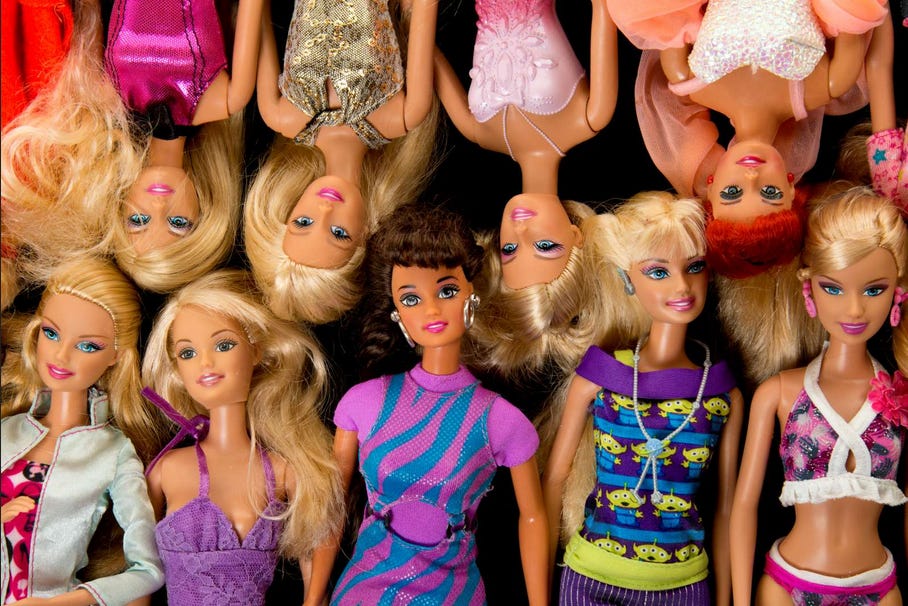
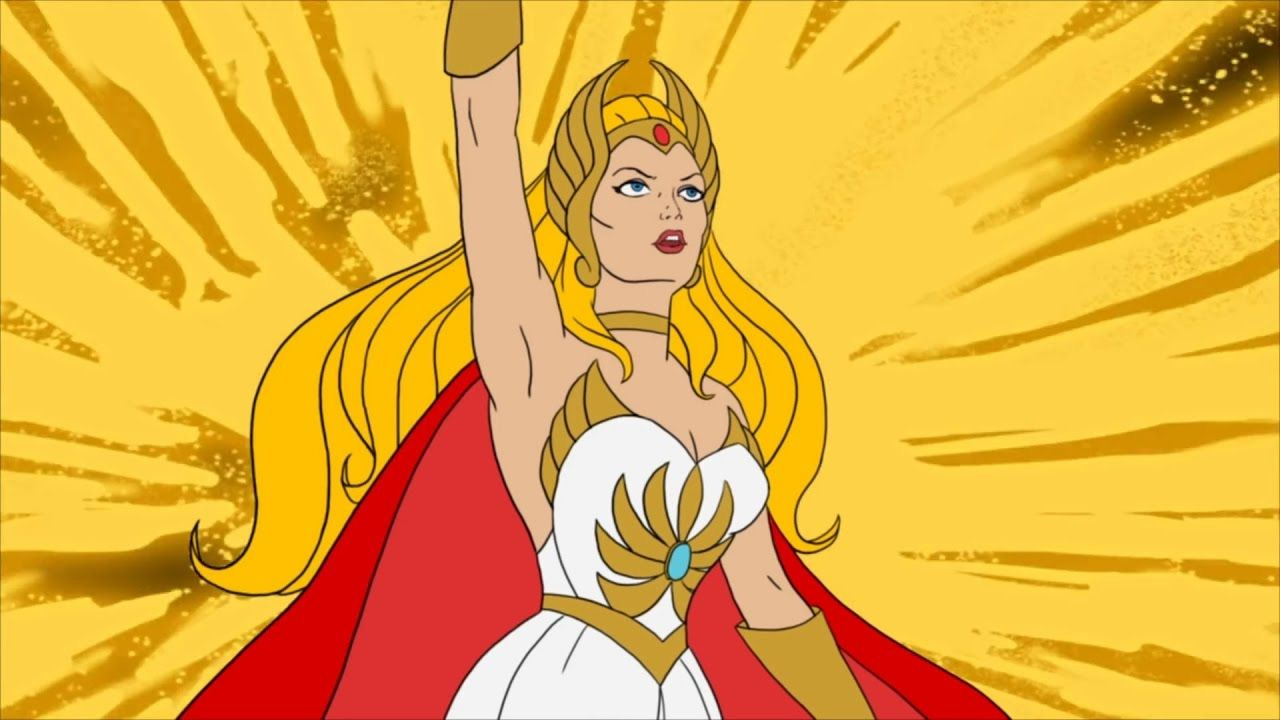
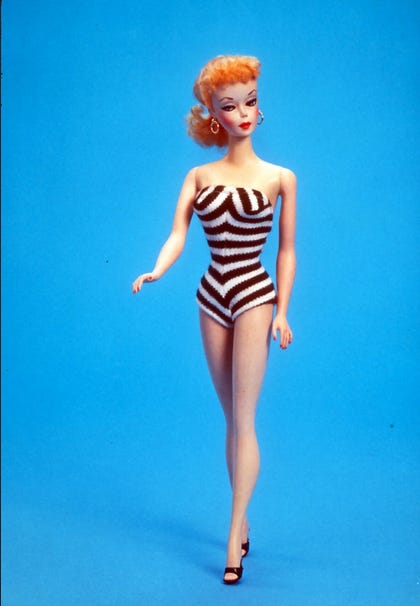
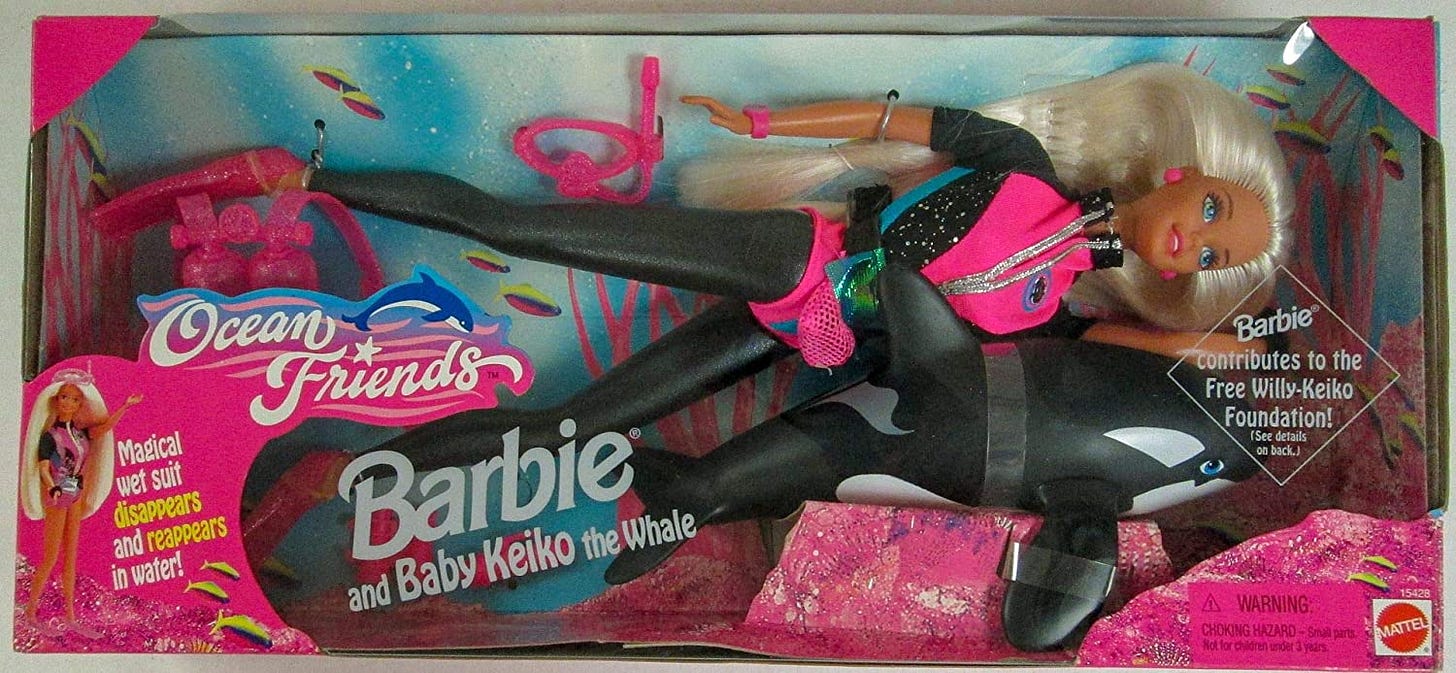
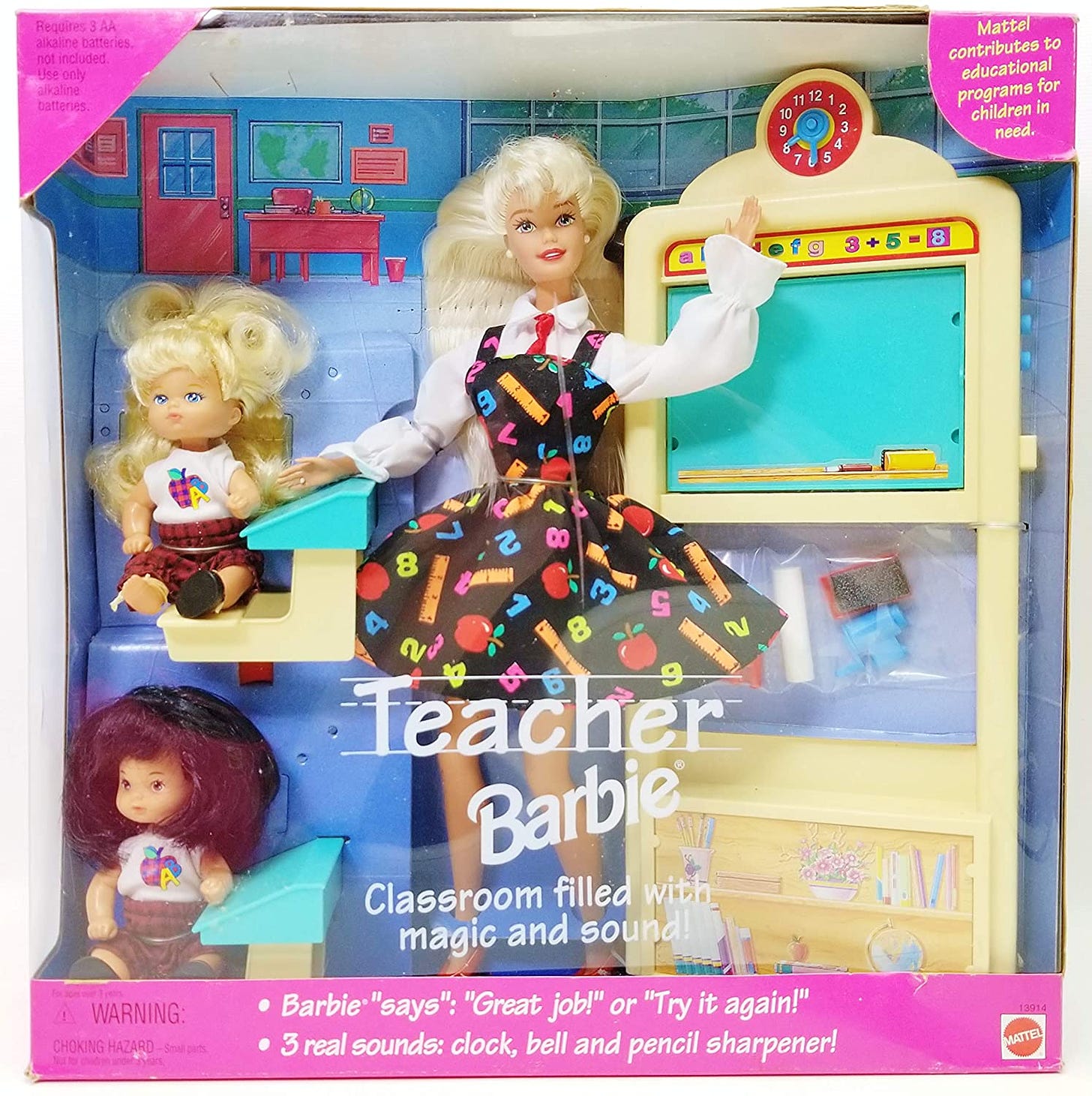
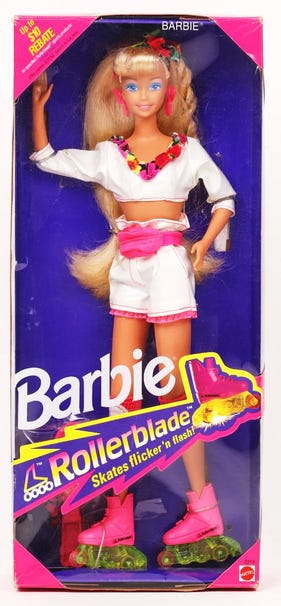
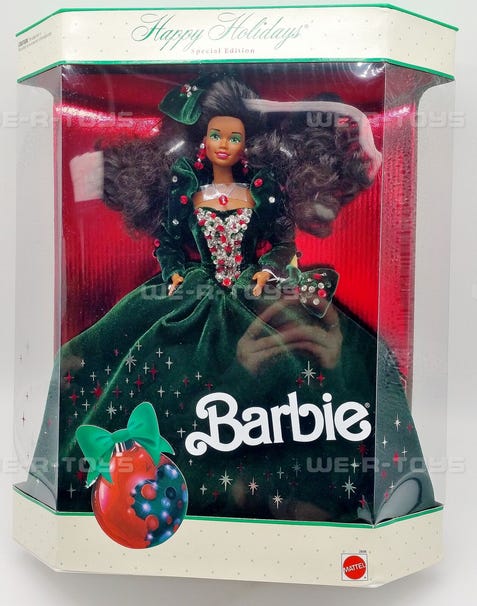
This is a GREAT post.